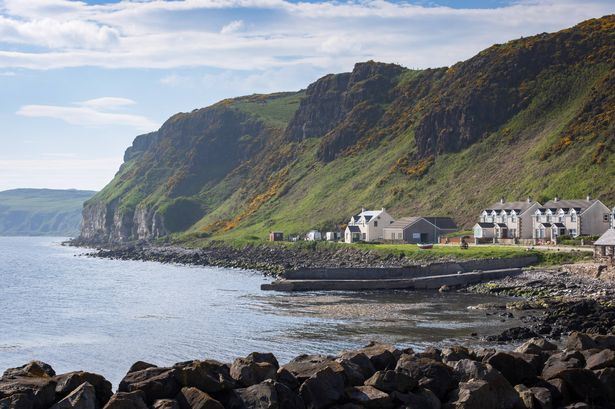This picturesque island off of the coast of Northern Ireland stands out for its unique charm and natural beauty, as it sits completely isolated from the rest of the UK
Tucked away and untouched by mass tourism, this remote island provides the perfect retreat for anyone wanting to reconnect with nature and breathe in the crisp coastal air.
Rathlin Island boasts an incredible array of wildlife, making it an idyllic destination in Northern Ireland for birdwatching and walking, with a tranquillity that only a community of just 150 residents could provide. And yet, they share their home with tens of thousands of seabirds.
The Rathlin Seabird Centre provides a magnificent vantage point to watch the delightful antics of puffins, razorbills and kittiwakes in their natural surroundings. Additionally, seals are frequently spotted basking on the rocks, whilst Irish hares and mink can be seen wandering across the terrain.
One visitor shared their experience on TripAdvisor, saying: “The beautiful and peaceful place. Very little tourism, but it’s not needed; everything is basic, normal everyday life. It’s so simple just to walk the island.
“We have done this on several occasions and walk to each lighthouse. I recommend getting the bus to the bird sanctuary, as it’s quite a walk and very hilly. The scenery is like you will never have seen before.”, reports Belfast Live.
Thanks to the distinctive shape of this small island, it features three stunning lighthouses, each with its own character. Next to the seabird centre stands the West Lighthouse, renowned for being Ireland’s only upside-down lighthouse and an essential stop on any visit.
The East Lighthouse, Rathlin’s oldest, stands tall on the edge of a cave that is steeped in history. It’s said that this very cave was the refuge of Robert the Bruce in 1306 after his defeat in Scotland.
Legend tells us that while hiding away, he found inspiration from a spider to continue his fight for Scottish independence. This tale has forever linked him with the island, and many visitors come to pay their respects at the cave, gazing out towards Scotland from Rathlin.
One satisfied visitor said: “The scenery is mind-blowing, and taking the bus up to the lighthouse and bird sanctuary was fantastic. So much to see, and not just puffins. Lots of other nesting birds, plus the old upside-down lighthouse. Just very cool.”
Another tourist wrote: “A perfect day on an idyllic and unspoilt island. From start to finish… from the scenic crossing to the cold drink at McCuaig’s bar overlooking the swimmers and paddle boarders in Church Bay (at the end of a long walk on a sunny day), Rathlin has everything you could desire.”
However, the only way to reach Rathlin Island is by ferry from Ballycastle Harbour. You have two options: a passenger-only ferry that takes about 25-30 minutes, or a larger ferry that accommodates both people and cars, which takes up to 45 minutes.

